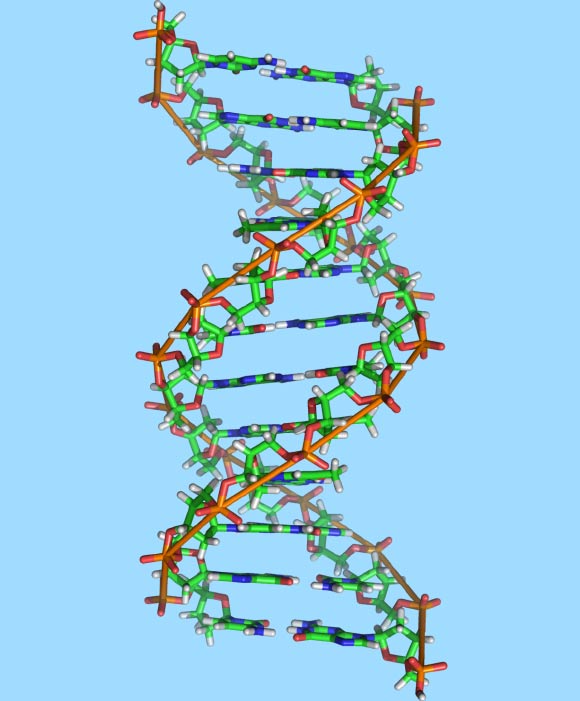A large team of scientists led by Washington University geneticist Dr John Stamatoyannopoulos has found a ‘secret’ second code hiding within human DNA.

This image shows the structure a DNA molecule. Image credit: Richard Wheeler / CC BY-SA 3.0.
Since the genetic code was deciphered in the 1960s, researchers have assumed that it was used exclusively to write information about proteins.
The genetic code uses a 64-letter alphabet called codons.
Dr Stamatoyannopoulos with co-authors were stunned to discover that some codons, which they called duons, can have two meanings. One describes how proteins are made, and the other instructs the cell on how genes are controlled.
These two meanings seem to have evolved in concert with each other. The gene control instructions appear to help stabilize certain beneficial features of proteins and how they are made.
“For over 40 years we have assumed that DNA changes affecting the genetic code solely impact how proteins are made. Now we know that this basic assumption about reading the human genome missed half of the picture,” said Dr Stamatoyannopoulos, who is the senior author of the study published in the journal Science.
The study highlights that DNA is an incredibly powerful information storage device, which nature has fully exploited in unexpected ways.
The discovery of duons has major implications for how scientists and physicians interpret a patient’s genome and will open new doors to the diagnosis and treatment of disease.
“The fact that the genetic code can simultaneously write two kinds of information means that many DNA changes that appear to alter protein sequences may actually cause disease by disrupting gene control programs or even both mechanisms simultaneously,” Dr Stamatoyannopoulos said.
______
Stergachis AB et al. 2013. Exonic Transcription Factor Binding Directs Codon Choice and Affects Protein Evolution. Science, vol. 342, no. 6164, pp. 1367-1372; doi: 10.1126/science.1243490







